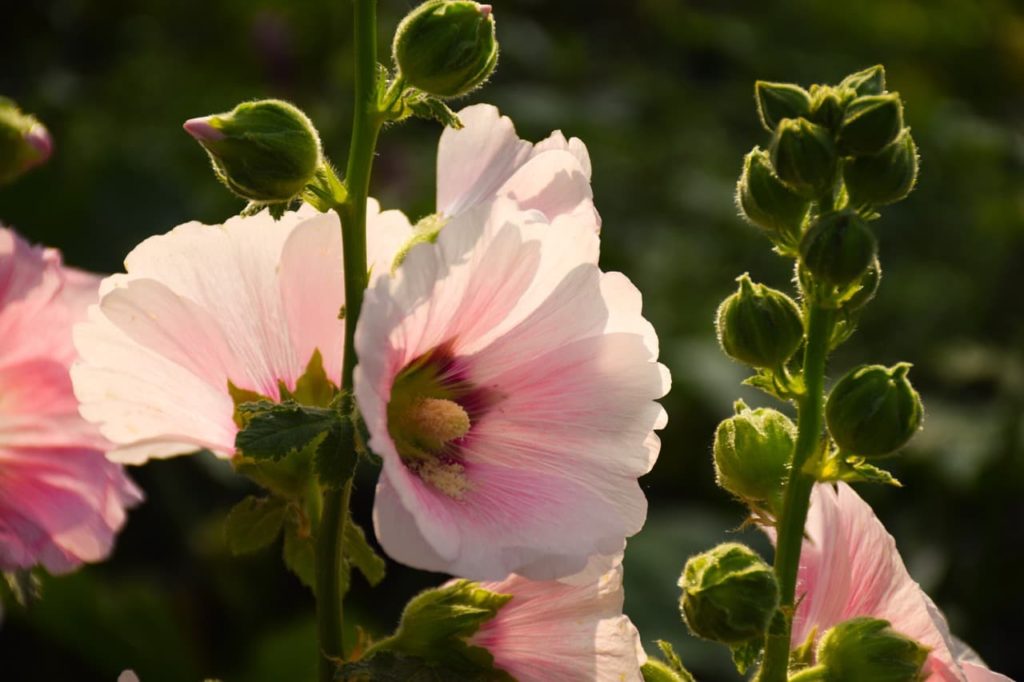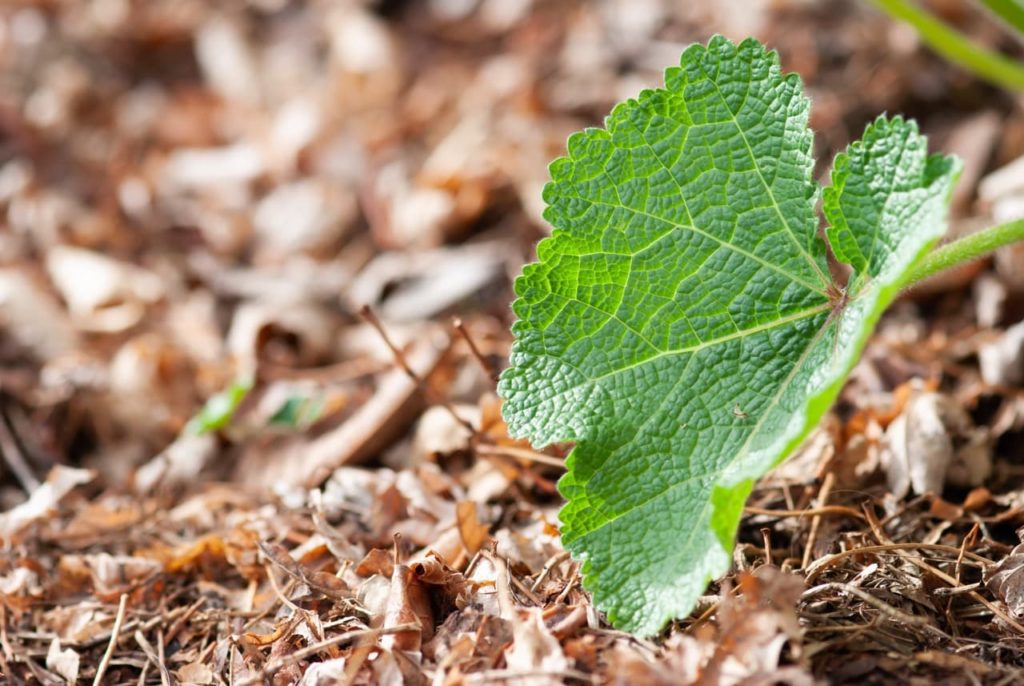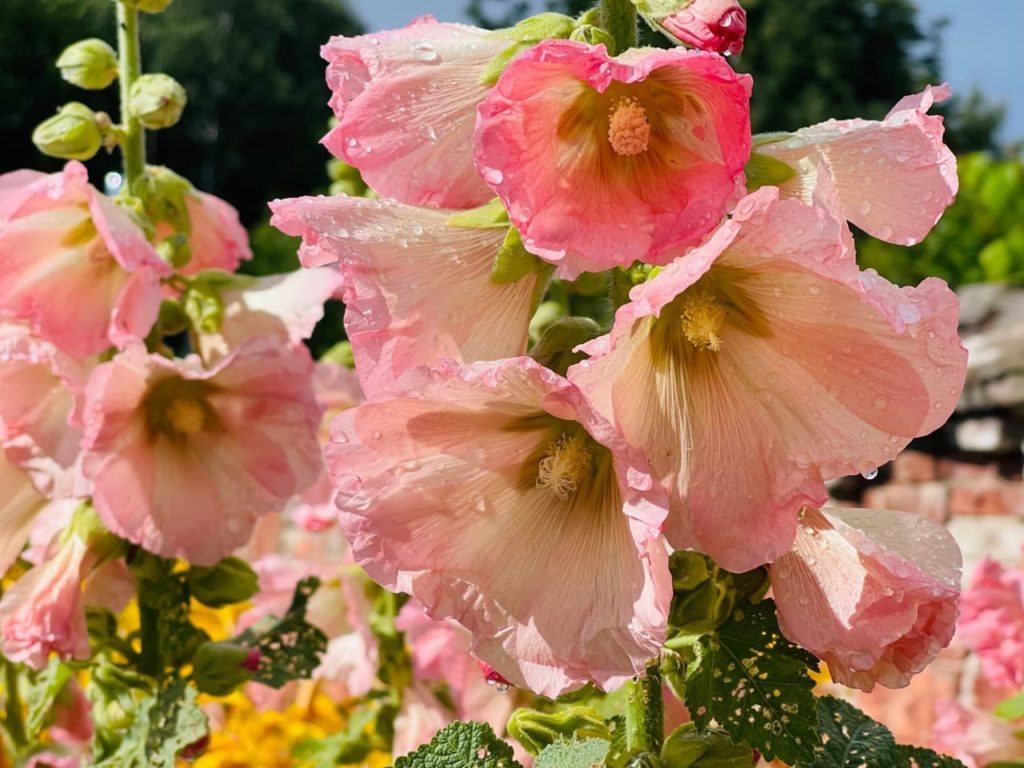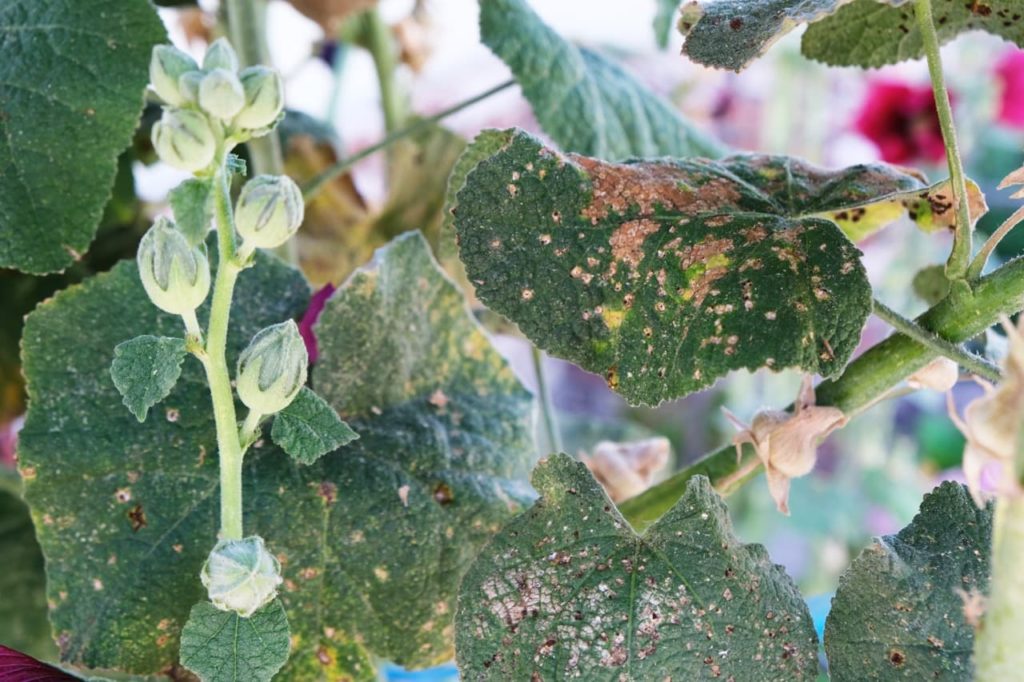BIENNIALS > HOLLYHOCKS > CONTAINERS
IN THIS GUIDE
HOLLYHOCK GUIDES

Container GrowingRustSowing
Hollyhocks are popular bungalow garden border plants .
However , if you are limited in the blank you have available and still want to grow these pop plants , then you might marvel whether hollyhocks are an selection for a container garden .

Can You Grow Hollyhocks In Pots?
Hollyhocks are certainly not the best nor well-to-do pick for container cultivation .
If you could grow them in the ground then this is unquestionably the easier option and will lead to much better solvent .
The problem is that althea are tall plants .

They have deep strike roots as well as sidelong roots that like to spread out out below the priming coat .
So , finding a container big enough to support healthy ascendent growth can certainly be a challenge .
While you could potentially grow hollyhocks in a very orotund container , such as a 50 - gallon drum or an old whisky bbl , the result may still be patchy and misfortunate .

Where possible , it is sure enough good to grow althaea in the basis or to opt more suited plants for your container garden .
Container - develop althea will also certainly require a flock more study and attention than those growing in the ground , particularly when it comes to watering .
If you do resolve to grow hollyhock in a container , then that container needs to be as large as possible , ideally very deep and with enough breadth too .

You will also require to cautiously consider the variety of althaea that you choose ; opt for a shorter gnome variety rather than one that can grow 2 m or taller .
1) Choose A Wide & Deep Container
Ideally , your container should be , at thevery least , 60 cm wide and more than 1 m deep .
Any container that is modest than this will not allow the all-embracing and deep roots of the althaea to acquire as they should .
If root can not form healthily , then the plant will be stunted , conk out to boom and flowering will be decrease .

You could potentially use a suitable barrelful or stooge in which to grow althaea if you require them in your container garden .
Remember that you may need to retrieve about some support for the hollyhock if you live in a windy fix .
Your cask or tail will need to be placed against a wall or fence in a very sheltered spot .

It must also have good drain at the base .
2) Use A Moist, Mulched Growing Medium
Filling your bombastic container will be the next challenge if you do decide to grow hollyhocks in this way rather than in the ground .
althea need moist but well - drained grunge .
A peat - free soil , loam - based potting mix or a homemade equivalent with plenty of constituent matter may work .

If you are growing hollyhocks in containers , you will require to tot up birth rate by laying mulch at the top of the container around the base of the plant each year .
3) Replace After Flowering
althaea are short - lived perennial , but it is generally best to replace the plants once they flower because they are prostrate to a fungous transmission called rust .
Sow or pot them up in the spring of one class andthey will flower in the summer of the following year .
If you have mature your hollyhocks from cum , you will have get your seeded player indoors in April or May .

Pot - grown plants can be planted out in June , through the summer or in early autumn .
4) Tie In Supports
If you are absolutely determined to develop hollyhock and can only do so in containers , be inclined to keep a unaired heart on your plant .
Remember that you may need some backing to which you may draw in your hollyhocks as they grow , specially if you are growing a tall cultivar or know in an domain where gusty wind may be a problem .
Make certain that you set your containers in a desirable spot in full sun , ideally in a sheltered south or due west - front position against a sunny wall or fencing .
“ hollyhock will apace increase in tiptop just before flowering , ” say Master Horticulturist Peter Lickorish .
“ This is the vulnerable stage ! I use a metre - long cane , inserted to a third of its astuteness , and tie the emerging fore loosely to this . I apply a figure eight air mile of garden string . ”
5) Water Well (But Don’t Overwater!)
Hollyhocks acquire in the ground typically need to be kept moist and watered when untried and while they become established in gild to grow unattackable and healthy roots .
However , when growing in a container , you will likely have to bear on to water regularly to keep the growing intermediate moist ( but not waterlogged ) during the growing time of year .
Do not overwater though , and keep the pee off the leaves , making certain that spare water can always drain off freely .
You may shin to get body of water to the roots effectively when produce hollyhocks in a container .
Make certain that you do not just water the surface , but water supply deeply so water seeps out of the bottom of the barrel or the other big container you have used .
Hollyhocks typically wo n’t require run other than with the mulches of organic thing or compost that you sum to the surface after planting .
6) Watch Out For Rust
continue vigilant for rust fungus , as this fungal infection is very rough-cut on hollyhock .
Remove any badly impress material promptly to avoid severe infection .
7) Cut Back The Flowering Stalks
After hollyhock blossom in their second class , you could cut the flowering stalks back to the base or you could await for the seeds to train and then garner them .
It is often best to treat hollyhocks as biennial and discard or replace them with seedlings after they blossom , but they can last for a couple more years if rusting does not take them out .
With all this order – though theoretically possible , grow hollyhocks in containers is certainly not something that I would recommend .
There are flock of other bungalow garden favouritesthat I ’d argue are much better suited to container cultivation .